
This is a list of notable Puerto Rican scientists involved in the United States Space Program, also known as the National Aeronautics and Space Administration (NASA) and their contributions to said program. This list is not limited to Puerto Ricans born in Puerto Rico, it also includes people of Puerto Rican descent born elsewhere. According to an article written by Margarita Santori Lopez for the official newspaper of the University of Puerto Rico's Mayagüez Campus, "Prensa RUM", as of 2003, of the 114 Hispanics working at NASA Goddard Space Flight Center in Maryland, 70 were Puerto Ricans or of Puerto Rican descent.[1]
Puerto Ricans and people of Puerto Rican descent, both men and women, have reached top positions in NASA, serving in sensitive leadership positions. On May 6, 2004, Joseph M. Acaba became the first person of Puerto Rican heritage to be named as a NASA astronaut candidate, when he was selected as a member of NASA Astronaut Training Group 19.[2] On an average, only the top 4% of the qualified applicants are selected as finalists, and are invited to the Johnson Space Center in Houston for interviews for a position in the Astronaut Candidate Class. Out of the finalist group, an average of only 0.63% are selected to become an Astronaut Candidate.[3] Other notable individuals who have reached finalist status include: Nitza Margarita Cintron, Astronaut Class 8 (1978),[4] Carlos Ortiz Longo, Astronaut Class 16 (1996).,[5] Enectalí Figueroa-Feliciano, Astronaut Class 19 (2004) and Class 20 (2009),[6] and Vanessa Aponte Williams, Astronaut Class 20 (2009) and Class 21 (2012).
Joseph M. Acaba

| External videos | |
|---|---|
In May 2004 Acaba became the first person of Puerto Rican heritage to be named as a NASA astronaut candidate, when he was selected as a member of NASA Astronaut Training Group 19.[9] He completed his training on February 10, 2006 and was assigned to STS-119, which flew from March 15 to March 28, 2009 to deliver the final set of solar arrays to the International Space Station.;[10] Statistics[11]
| # | Spacecraft launch | Launch date | Mission | Spacecraft landing | Landing date | Duration | Spacewalk times | Spacewalk duration |
|---|---|---|---|---|---|---|---|---|
| 1 | Discovery STS-119 | 15 March 2009, 23:43UTC | STS-119 | Discovery STS-119 | 28 March 2009, 19:13 UTC | 12 days 19 hours 29 minutes | 2 | 12 hours 57 minutes |
| 2 | Soyuz TMA-04M | 15 May 2012, 03:01 UTC | ISS-31 / ISS-32 | Soyuz TMA-04M | 17 September 2012, 02:52 UTC | 124 days 23 hours 51 minutes | 0 | 0 |
| 3 | Soyuz MS-06 | 12 September 2017, 21:17 UTC | ISS-53 / ISS-54 | Soyuz MS-06 | 28 February 2018 | 168 days 5 hours 13 minutes | 1 | 6 hours 49 minutes |
| 306 days 34 minutes | 3 | 19 hours 46 minutes | ||||||
Roberto Alemán
Electronics Engineer, Aero-Space Technologist Environmental Instruments Director at NASA Goddard Space Flight Center in Maryland. Alemán directs everything that is related to the environmental instruments which the United States provides to the European Space Agency in order to operate the MetOp, a European satellite that provides environmental information to both Europe and the United States.[12]
Vanessa Aponte Williams, Ph.D.
Chemical and Aerospace Engineer, Human Spaceflight Exploration Lead, Lockheed Martin Space

Dr. Vanessa Aponte Williams is the Human Spaceflight Exploration Lead of Advanced Programs, Lockheed Martin Space. She has close to 20 years of experience in the Aerospace Industry, primarily devoted to human spaceflight and systems engineering. Prior to Lockheed Martin, she worked in the areas of Advanced Life Support, as well as Controls, Dynamics and Propulsion at NASA Kennedy, Dryden, and Johnson Space Centers. She joined Lockheed Martin as a Sr. Systems Engineer in 2006; one of her most notable roles held within the Orion Multi-purpose Crew Vehicle program, where she led the Cross-Cutting Integration Team in tackling high-visibility, short-turnaround challenges. After Orion, Vanessa also led the New Technology Insertion Board as well as oversaw the technical and programmatic scrutiny of critical U.S. spaceflight assets as Risk and Opportunity Manager within the Special Programs Line of Business. Outside her career at Lockheed Martin, Vanessa has had the distinction of being selected as a finalist and undergoing the Astronaut Selection Interview process at NASA Johnson Space Center twice (2009 & 2012). Throughout her career at Lockheed Martin, Vanessa has been intimately involved with leadership development, STEM and volunteerism. She is also a former member of Rocky Mountain Rescue Group. Vanessa was born and raised in Puerto Rico. She received a B.S. and M.S. in Chemical Engineering from UPR at Mayagüez and a Ph.D. in Aerospace Engineering Sciences from CU Boulder.[13]
Adán Rodriguez-Arroyo
Electronics Engineer, Aero-Space Technologist
Stationed at NASA Goddard Space Flight Center in Maryland for over 20 years, Rodríguez-Arroyo was the Communications System Lead Engineer for the Lunar Reconnaissance Orbiter Mission (LRO), launched in June 2009 and currently orbiting the Moon. Currently, Rodriguez-Arroyo is the Communications System Lead Engineer for the Magnetospheric MultiScale Mission (MMS) to be launched in 2015 and will study the electromagnetic iteration between the Sun and Earth.
Rodriguez-Arroyo earned his BSEE from the University of Puerto Rico and his MSEE from the Whiting School of Engineering at Johns Hopkins University. He was born in Peñuelas, Puerto Rico.[14]
Renán Borelli
Mechanical Engineer, Aero-Space Technologist
SWIFT satellite instrumentation Manager at NASA Goddard Space Center in Maryland. The Swift is a multi-wavelength space-based observatory dedicated to the study of gamma-ray burst (GRB) science.[1]
Anthony M. Busquets
Electronics Engineer, Aero-Space Technologist
Stationed at NASA Langley Research Center in Hampton, Virginia, his responsibilities include the development and application of multifunction control/display switch technology in 1983 and Development and application of a microprocessor-based I/O system for simulator use in 1984.
NASA Awards and Recognitions:
1986-Certification of Recognition (NASA Tech Brief Publication), 1987, 92-Certificate of Recognition (NASA Innovation Disclosure), 1992-NASA Team Excellence Award, 1993-Certificate of Outstanding Performance, 1995, 97-NASA Performance Award.
He is the author and or co-author of over 13 conference papers and NASA formal publications in the areas of cockpit controls and displays, use of stereoscopy in flight displays and pictorial flight displays for situation awareness enhancement.[15]
Miguel Alvarez Chico
Computer Engineer, Aero-Space Technologist
System Hardware Design Engineer for the Aft-Deck Simulator and the Cockpit Motion Facilitya at NASA Langley Research Center in Hampton, Virginia. He is also the Assistant Systems Engineer, General Aviation Simulator (reactivation) - support of the AWIN research study (1998–2002).[15]
NASA Awards and Recognitions:
1997, 2000-Achievement Award.
Nitza Margarita Cintron
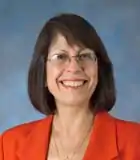
Chief of Space Medicine and Health Care Systems Office at NASA's Johnson Space Center.
In 1979, Cintron was the originator of the Biochemistry Laboratory at the Johnson Space Center. Cintron also served from (1979–85) as the project scientist for the Space Lab 2 mission which was launched aboard the Space Shuttle Challenger in 1985. Among the positions held by Cintron in NASA are "Chief of the Biomedical Operations and Research Branch in the Medical Science Division" and "Director for managing the Life Sciences Research Laboratories" in support of medical operations. In 2004 she was named "Chief of NASA's (JSC) Space Medicine and Health Care Systems Office", position which she currently holds.[16]
In 1978, Dr. Cintron became the first person of Puerto Rican heritage to become a finalist of the NASA Astronaut Selection Program.
NASA Awards and Recognitions:
"JSC Director's Commendation and Innovation Award", the centers highest award for a civil servant, the "NASA Medal for Exceptional Scientific Achievement", the highest science honor given by the agency. On October 7, 2004, she was inducted into the Hispanic Engineer's National Achievement Awards Conference (HENAAC) Hall of Fame. The Hall of Fame, located in Los Angeles, California, was established in 1998 and recognizes the contributions of Hispanics in the fields of science, engineering and technology. In 2006, she was recognized as one of the 100 most influential Hispanics in the United States by Hispanic magazine.[17][18]
Gilberto Colón
Chemical Engineer, Aero-Space Technologist
Associate Director for the Sun Earth Connections Programs
Colon is the director of the NASA program known as "Living with a Star/Solar Terrestrial Probes". He travels throughout the United States and Puerto Rico during the summers, instructing teachers of both private and public educational facilities.[1]
NASA Goddard Space Flight Center in Maryland
Juan R. Cruz
Aerospace Engineer, Aero Space Technologist
"Mars Exploration Rover (MER) Parachute" at NASA Langley Research Center in Hampton, Virginia.
Cruz is a senior aerospace engineer in the Exploration Systems Engineering Branch at the NASA Langley Research Center. His responsibilities are focused on research and development of entry, descent, and landing (EDL) systems for robotic and human exploration missions. He was a member of the highly successful Mars Exploration Rover (MER) project that placed two rovers on the surface of Mars in 2004. His contributions to the MER project were centered on the design and qualification of the supersonic parachute.
Cruz is also a member of the Phoenix (Mars 2007), Mars Science Laboratory (Mars 2009), and Crew Exploration Vehicle EDL teams. He has undertaken research on advanced missions to Mars, including robotic airplanes, as well as having been a technical reviewer for the Genesis, Huygens, and Stardust missions. Prior to his involvement with exploration programs he conducted research on high-altitude unmanned aircraft.
Cruz holds a Ph.D. from Virginia Tech, and an S.B. from MIT, both in aerospace engineering. During his years at MIT he was involved with the Monarch and Daedalus human powered airplane teams.[15]
Carlos Del Castillo
"Program Scientist for the Ocean Biology and Biogeochemistry Program"
"NASA Headquarters, in Washington, D.C."
Del Castillo is the recipient of the Presidential Early Career Award for Scientists and Engineers (PECASE) award, the highest honor bestowed by the United States government on scientists and engineers beginning their independent careers.[19]
He began working in the Mississippi River plume and in the application of remote sensors to study coastal environments. Del Castillo co-edited with Drs. Richard Miller and Brent McKee, "Remote Sensing of the Coastal Environment," a book which provides extensive insight on remote sensing of coastal waters from aircraft and space-based platforms
Lydia Del Rio

Analyst
"Research and Program Management and Center Full Cost Program Analyst" at NASA Kennedy Space Center in Florida.
Del Rio is responsible for planning and managing R&PM and for evaluating the effectiveness of its program efforts, and for the allocation of resources and funds utilization.[20]
Rey N. Diaz
Engineering Management
Stationed at NASA Kennedy Space Flight Center in Florida, Dr. Rey N. Diaz is a senior manager serving as the Chief of the Business Systems Division at the Kennedy Space Center. Diaz holds a Ph.D. in Industrial Engineering and a master's degree in Engineering Management both from the University of Central Florida. Prior to joining NASA in 1983, Diaz earned his B.S. degree in electrical engineering from the University of Puerto Rico, Mayagüez Campus.
For over 40 missions, Dr. Diaz was instrumental in the integration and testing of space flight systems and instruments carried on board Space Shuttle missions. In 1991, Diaz received the Silver Snoopy Award - one of the highest and most prestigious honors bestowed by the NASA's Astronaut Office and flown aboard a Space Shuttle mission, and the NASA Management award in 2017 for sustained and outstanding performance and contributions to the NASA Spaceflight programs
An expert on management systems, Dr. Diaz has delivered exceptional services and advice to institutional and organizational management. Dr Diaz led the successful implementation of the Business Management System associated with all NASA employees for the Kennedy Space Center.[21]
Dr. Diaz has been recognized for his contributions to increase awareness toward careers in Science, Technology, Math and Science and the impact of science and technology on society.
Alfonso Eaton
Mechanical Engineer, Aero-Space Technologist
Assistant Director of the Engineering Division of the Goddard Space Flight Center.
"In 1966, Eaton became the first Puerto Rican and graduate of the Mayagüez Campus of the University of Puerto Rico to work for NASA. Eaton retired on September 2005, after 39 years of service to the Space agency."[1]
NASA Awards and Recognitions:
2000-NASA Medal for exceptional service, 200-NASA Medal for extraordinary service.
Enectalí Figueroa-Feliciano

Mechanical Engineer, Astronaut applicant
An astrophysicist at Goddard Space Flight Center in Maryland, Figueroa's research interests revolve around the development of high-energy-resolution imaging spectrometers for space-borne applications in experimental astrophysics and cosmology."
"Figueroa is an astrophysicist who pioneered the development position-sensitive detectors and is an expert and researcher on dark matter.[22][23] Figueroa is a researcher with the National Aeronautics and Space Administration (NASA) and a professor of physics MIT.[24][25]
Figueroa is also an Assistant Professor of Physics at the Massachusetts Institute of Technology {MIT] and the author of various papers including "Position-sensitive low-temperature detectors".[1][25] astrophysicist at the National Aeronautics and Space Administration (NASA)[24]
Orlando Figueroa
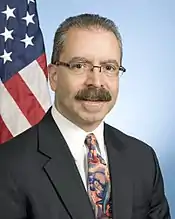
| External videos | |
|---|---|
Mechanical Engineer, Aero-Space Technologist
Former "Director of Solar System Exploration Division and Mars Exploration" and "Director, Applied Engineering & Technology" (as the "Director of Engineering" he managed the full scope of engineering activities at Goddard) at Goddard Space Flight Center in Maryland.
Headed the cryogenic technology section, played a key role on the Cosmic Background Explorer mission, and managed a Space Shuttle Helium on Orbit Mission. Manager for the Small Explorers (SMEX) project, manager for the Explorers Program, and Director of Systems Technology and Advanced Concept Directorate. On August 1, 2004, was named Deputy Associate Administrator for Programs.[26] In August 2005, Figueroa was appointed to the position of Director for System Safety and Mission Assurance at the Goddard Space Flight Center. In October 2005, Figueroa was named Director of Applied Engineering and Technology at Goddard, as such he is responsible for 1,300 employees and provides guidance on engineering and system technology.
NASA Awards and Recognitions:
1993-NASA Outstanding Leadership Medal for SMEX, 1994-Community Stars Award, 2001-Presidential Rank Award for Outstanding Performance as a Senior Executive, 2002-Pioneer Award, 2002-Hispanic Business magazine named Fiqueroa to its list of the nation's 100 Most Influential Hispanics.[26]
Guillermo A. Gonzalez
Electronical Engineer, Aero-Space Technologist
"In Space Propulsion-Solar Sails Program Manager"
Specialty: Electropyrotechnics Firing circuit & Nickel Cadmium Battery Systems at Langley Research Center in Hampton, Virginia.
NASA Group/Team Achievement Awards:
1989, 90-Group Achievement Award as member of the HALOE Instrument Team, 1990-Group Achievement Award as member of the X-29 Drop Model Team, 1994-Team Excellence Award for the X-31 Drop Model Program. Co-authored 3 publications in the area of aircraft flight testing.[15]
Olga D. Gonzalez-Sanabria

Chemical Engineer, Aero-Space Technologist
"Director of the Engineering and Technical Services"
Gonzalez-Sanabria is responsible for planning, and directing a full range of integrated services including engineering, fabrication, testing, facility management and aircraft services for the Glenn Research Center.
NASA Awards and Recognitions:
1993-NASA Exceptional Service Medal, 2002-NASA Medal for Outstanding Leadership, 2004-Inducted to the Ohio Women Hall of Fame.[27]
NASA Glenn Research Center in Ohio
Amri Hernandez-Pellerano
Electronics Engineer, Aero-Space Technologist
"Power Systems Electronics Designer" at Goddard Space Flight Center in Maryland.
Hernandez-Pellerano designs, builds and tests the electronics that will regulate the solar array power in order to charge the spacecraft battery and distribute power to the different loads or users inside the spacecraft.[28]
NASA Awards and Recognitions:
2003-The GSFC Engineering Achievement Award for her design of the Power Systems Electronics for the MAP mission.
Gloria Hernandez
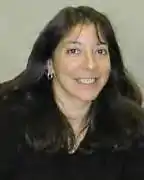
Physical Scientist, Science Manager, Stratospheric Aerosol and Gas Experiment III on the International Space Station (SAGE III on ISS)
NASA Awards and Recognitions:
Over 30 NASA Performance Awards and Superior Accomplishment Awards
2011 - Official Citation from the General Assembly, State of Connecticut in recognition for receiving the 2011 Latina Legends Award in Science and Technology from the Latinas & Power Symposium, and for her commitment to the empowerment of women and breaking through barriers in science and technology.
2001 - Recipient of the NASA Fellowship to Harvard Business School.
2000 - Southern Illinois University Minority Engineering Program Achievement Award.
1998 - The National Technical Association 50 Top Women in the Sciences Award.[15][29]
Annie Delgado-Holton
Project Control Specialist
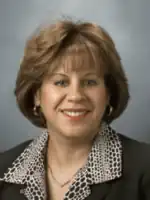
As a PCG Delgado-Holton us responsible for the budget planning and analysis of a major portion of a program and or project for which she was selected. She provides support to the Exploration Systems Division (ESD) as member of the Project Control Office staff. Delgado-Holton evaluates financial trends and determines compliance with project guidance at Glenn Research Center in Ohio.
Delgado-Holton launched the first "Esperanza Community Dialogue", Esperanza is a non-profit organization in the Cleveland area, whose main goal is to provide students with the necessary resources to excel in their college careers. Esperanza Community Dialogue brings forth to the Center Esperanza scholarship recipients and their parents to learn and discuss the great opportunities offered at NASA GRC.
Delgado-Holton began her career at NASA Glenn Research Center as an Executive Support Assistant to the Aeronautics Directorate.
She is also a member of LATINA and as a member she advocated for the inclusion of a Hispanic woman into the Ohio's Women's Hall of Fame.[30]
Lucas G. Horta
Aerospace Engineer, Aero-Space Technologist
NASA Awards and Recognitions:
1990-Certificate of Appreciation (Outstanding Accomplishments Control-Structure Interaction Program), 1987, 89, 94, 96-Certificate of Outstanding Performance, 1990-Group Achievement Award (Control-Structure Interaction Mini-Mast Team), 1990-92-Superior Accomplishment Award, 1996-Performance Award.
He is the author and or co-author of over 35 technical papers in the areas of system identification, vibration control and isolation, optimal control design and implementation, optimal actuator/sensor placement, model testing, and experimental verification of control methodologies.[15]
NASA Langley Research Center in Hampton, Virginia
Grisselle LaFontaine
Information Technologist
"Information Technology (IT) Specialist" at Glenn Research Center in Ohio.
Part of LaFontaine's job is to assist in the implementation of federal IT mandates. She develops Web-based solutions to address information management needs. LaFontaine developed a dynamic web-based bulletin board called "Today@Glenn" and she created a web site documenting Cultural Change initiatives at Glenn. LaFontaine helped develop a NASA strategic plan for the advancement of Hispanics at the Center.[31]
Javier Lecha
Electronics Engineer, Aero-Space Technologist
"Group Leader in the area of Electromechanical systems" at Goddard Space Center in Maryland.[1]
María C. Lecha
Electronics Engineer, Aero-Space Technologist
Lecha is in charge of a group of engineers who are in the process of developing the "Solar Dynamic Observatory" which will be launched into outer space in 2008 at Goddard Space Center in Maryland[1]
Carlos A. Liceaga, P.E.
Electrical and Computer Engineer, Aero-Space Technologist
"Explorer Acquisition Manager" at Langley Research Center in Hampton, Virginia.
For the Explorer Program, leads the development of proposal guidelines; and the technical, management, and cost evaluation of the proposals.
Specialties: Fault-Tolerant Computing, Reliability Modeling
NASA Awards:
2003, 06-Time-Off Award; 1995, 2003, 04, 05-Performance Award; 2002-For A Special Task Award; 1999, 2000, 01-Superior Accomplishment Award; 1998-Certificate of Recognition for Invention Disclosure; 1986-Special Achievement Award.
He is the author and or co-author of 12 publications in the areas of reliability modeling, fault-tolerant computers, space systems, spacecraft simulation, Shuttle/Station subsystems, and space mission proposal guidelines.[15]
Carlos Ortiz Longo
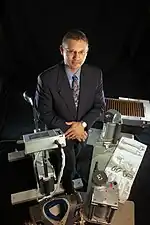

Mechanical Engineering, Materials Science and Engineering, Air Transport Pilot, and Flight Instructor.
Dr. Carlos R. Ortiz Longo is a retired NASA Johnson Space Center Engineer, and pilot. His expertise includes Thermal Analysis, Thermal Design, High Speed Atmospheric Thermal Protection Systems, Materials Engineering, Mechanical Behavior of High Temperature Structural Ceramics, Mechanical Testing of Materials, Structural Mechanics, Astronaut Crew Health Care Systems, Rocket Engine Testing, Project Management, and System Management. Dr. Ortiz Longo is currently an Airline Pilot for a major airline.[32]
Dr. Ortiz Longo reached finalist status in the Astronaut Selection program (top 4% of qualified applicants who are invited to the Johnson Space Center in Houston for final interviews), for Astronaut Candidate Class 16 in 1996.[33]
In 2005, Ortiz Longo was awarded the NASA Exceptional Achievement Medal. To be awarded the medal, a NASA employee must make substantial contributions characterized by a substantial and significant improvement in operations, efficiency, service, financial savings, science, or technology which directly contribute to the mission of NASA[34] For civilians, the decoration is typically bestowed to mid-level and senior NASA administrators who have supervised at least four to five successful NASA missions.[34] Astronauts may be awarded the decoration after two to three space flights.[34]
Among his awards, recognitions, and achievements are:
- Silver Snoopy Award, 1991 [35]
- Finalist, Astronaut Selection Program, Astronaut Candidate Class 16, 1996
- NASA Exceptional Achievement Medal, 2005
- Graduate of the NASA Leadership Development Program, 2009
Debbie Martinez
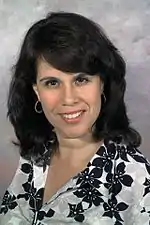
Computer Engineer, Aero-Space Technologist
"Expertise: Flight Simulation" at Langley Research Center in Hampton, Virginia
"Flight Systems and Software Branch" Software manager for the new Cockpit Motion Facility. Martinez's job consists of supporting La RC (Langley Research Center) researcher community with their particular flight research project studies utilizing the La RC simulation facilities. This involves understanding their problem domain, formulating possible solutions, allocating appropriate resources, and ensuring that the results satisfy their researcher's needs.[15][36]
NASA Superior Awards:
1999-Outstanding performance and contributions to the FWP (Outstanding FWPC Representative),1999-Outstanding efforts in overseeing the final HSR simulation study at LaRC, 2001-Support of LaRC OEOP, 2001-2003-CMF DC6 Leadership. Plus numerous NASA Performance, NASA Team Excellence and NASA Group Awards. 1999-"Latina of the Year Award in Science and Technology" by "Latina" magazine.
Lissette Martinez
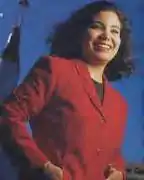
Electrical Engineer, Rocket Scientist
Martinez is the lead electrical engineer for the Space Experiment Module program at the Wallops Flight Facility which is part of NASA's Goddard Flight Facility.
She is responsible for providing electrical engineering support to Code 870 Space Experiment Module (SEM) program. She also is responsible for the testing of ground and flight hardware. Martinez works with students around the world, helping them with science experiments that will actually ride along on Space Shuttle missions and blast into space.
Martinez was part of the team that launched a rocket from White Sands, New Mexico to gather information on the Hale-Bopp Comet in 1999. She was featured in the November 2002 issue of Latina magazine.[37]
Lourdes E. Miranda
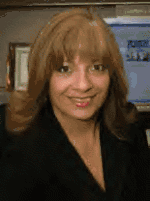
Senior Program Analyst
Miranda co-manages the NASA Sponsored Research and Education Support Services Contract (SRESS). These services include support to the process for soliciting and selecting research investigations for NASA funding; logistical support to workshops and conferences for sponsored research and education; and maintenance of an interactive internet site and electronic database that allow for submission and storage of proposals and associated documentation.
NASA Awards and Recognitions:
2005-she was awarded the NASA Acquisition Improvement Award (AIA) the highest agency acquisition award; recognitions from EPA, CSC, government of Puerto Rico, the University of Puerto Rico, and from the Hispanic community in Washington, D.C.. she was also featured in "Tiempo Latino - Washington Post".[38]
NASA Headquarters located in Washington, D.C.
Mayra N. Montrosa
Executive Officer for the NASA Chief Scientist
Montrosa is responsible for coordinating Science Policy at the Agency at Headquarters located in Washington, D.C. She works with representatives from the NASA research organizations to ensure that the NASA Science Policy is implemented as intended. She is also in charge of developing the NASA implementation to the Federal Policy on Research Misconduct. She works to ensure communication within the Agency research programs and between NASA other Federal Agencies.[39]
Marla E. Perez-Davis
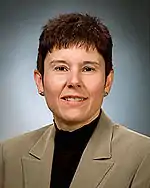
Chemical Engineer, Aero-Space Technologist
Positions held
- Director of NASA's John H. Glenn Research Center (Cleveland, OH) (2016-date)[40]
- Deputy Director of NASA's Glenn Research Center (Cleveland, OH) (2014-2016)
- Director of the Aeronautics Research Office at NASA's Glenn Research Center (Cleveland, OH) (2010-2014)
- "Chief Electrochemistry Branch" at Glenn Research Center in Ohio.
NASA Awards and Other Recognitions
- NASA Outstanding Leadership Medal
- Presidential Rank Award for Meritorious Executives
- 2015 Crain's Women of Note
- Top 25 Elite Business Women - Hispanic Business Magazine
- Women of Color Career Achievement
- Distinguished Alumni Award, Alumni Association of University of Puerto Rico Mayaguez
- Women in Aerospace Award for Aerospace Awareness
- Women of Color Technology Award for Career Achievement (2001)
- Hispanic Engineer National Achievement Santiago Rodriguez Diversity Award (2001)
- certified NASA Lean Six Sigma Black Belt
Marla E. Perez-Davis holds a PhD in Chemical Engineering.[41]
Mercedes Reaves
Mechanical Engineer, Aero-Space Technologist
"Research Engineer" at Langley Research Center in West Virginia
Reaves is responsible for the design of a viable full-scale solar sail and the development and testing of a scale model solar sail. She is also responsible for planning experimental studies to validate analytical techniques and study solar sails dynamics.[42]
Shayla Rivera
Aerospace Engineer
Rivera worked at NASA on the Space Shuttle and International Space Station programs at the Johnson Space Center in Houston, Texas. She left NASA, after working there for 8 years, on account that she wasn't allowed to place a St. Christopher medallion on the Space Shuttle dash board. Rivera discovered that she had a hidden talent as a comedian and used her experiences to create the hit one-woman show "Rocket Science and Salsa," In 2004, Rivera received the "Mario Moreno Cantinflas Award" presented by the city of Los Angeles in recognition of entertainers who "represent the Latino Community with the same humor as the great Cantinflas did" and for her involvement in the community.[43]
Miriam Rodon-Naveira

Biology-Aquatic Microbial Ecologist
"Senior Physical Sciences Technical Manager" at Dryden Flight Research Center located in California
Rodon-Naveria is responsible for developing, coordinating and maintaining research and educational activities in support of NASA DFRC mission.[44]
In 1995, she became the first woman minority Branch Chief within the National Exposure Research Laboratory. In 1998, she became the first Hispanic woman to hold the Deputy Directorship for the Environmental Sciences Division within the NERL.[15] Miriam Rodon-Naveria holds a PhD in Biology Aquatic Microbial Ecology.
Miguel Rodríguez
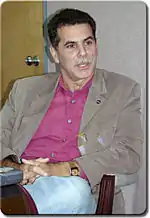
Mechanical Engineer
"Chief of the Integration Office of the Cape Canaveral Spaceport Management Office"
Rodríguez is responsible for overall integration of CCSMO functions including assuring the effective base operations, maintenance, sustaining engineering, support services for all NASA at Kennedy Space Center (KSC), 49th Space Wing at Cape Canaveral Air Base Station and Patrick Air Force Base which is provided through the Joint Base Operations and Support Contract.[45]
NASA Awards and Recognitions:
Two NASA Exceptional Medals, KSC Leadership Award and the NASA Silver Snoopy Award.
Otilia I. Rodriguez-Alvarez
Electrical Engineer, Aero-Space Technologist "Solar B Mission Manager/Geospace Instrument Systems Manager" at Goddard Space Flight Center in Maryland
Ms. Rodriguez-Alvarez began her career with NASA in 1986 at the Goddard Space Flight Center, Greenbelt, Maryland, where she served as a test engineer with the Space Simulation Test Engineering Section. She then transferred to the Guidance, Navigation, and Control Branch, where she worked on solar array and antenna systems for the Tropical Rainfall Measuring Mission (TRMM) and the X-Ray Timing Explorer (XTE). She later became the lead engineer for the Sensors and Actuators Team on the Microwave Anisotropy Probe (MAP).
After leaving the Engineering Directorate, she became the Instrument Manager for the Advance Baseline Imager for the Geostationary Operational Environmental Satellite (GOES) Program. Currently she is the Solar B Mission Manager and the Geospace Instrument Systems Manager in the Sun Earth Connection Office.
Otilia received her B.S. degree in electrical engineering from the University of Puerto Rico, Mayagüez Campus, and her M.S. in electrical engineering from the George Washington University, Washington, D.C.[46]
Pedro Rodriguez
.JPG.webp)
Mechanical Engineer, Aero-Space Technologist
"Director of the test Laboratory in the Engineering Directorate at NASA's Marshall Space Flight Center" at Marshall Space Flight Center in Alabama.
Rodriguez is responsible for the engineering services and facilities for in environmental structural and propulsion testing of NASA programs assigned to the Marshall Space Flight Center. Among his duties are research, development, qualification and acceptance testing of critical space and flight hardware, as well as the testing of relevant development hardware.
Rodriguez invented a portable, battery operated seat lift designed for people with degenerative knee arthritis to enable them to stand more easily.
NASA Awards and Recognitions:
NASA Exceptional Service Medal, NASA Inventors Award, The Silver Snoopy Award, The Marshall Center Directors Commendation Award as the "Outstanding Hispanic Employee". The Puerto Rican Senate recognized Rodriguez with a resolution marking his engineering achievement.
Pedro Rodriguez holds a PhD in Mechanical Engineering.[47]
Rodriguez is the son of the late Puerto Rican salsa singer Pellin Rodríguez.
Miguel Roman
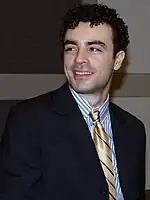
Earth System Scientist
| External videos | |
|---|---|
Miguel Román, is a research physical scientist with the National Aeronautics and Space Administration (NASA). A major focus of Román's work is the quantification of uncertainty in long-term satellite measurements of the Earth's surface at both moderate and high spatial resolutions. Román has developed a combination of global quality assessment and validation techniques that include visible, near-infrared, and multi-angular imagery and measurements acquired from in-situ and airborne platforms. His efforts to improve narrowband reflectance anisotropy models to estimate the Bidirectional Reflectance Distribution Function (BRDF) of land surfaces have led to major advancements in the estimation of terrestrial essential climate variables routinely used to monitor human activity and natural disturbances from satellite platforms. As a lead member of the Moderate Resolution Imaging Spectroradiometer (MODIS) and Visible Infrared Imaging Radiometer Suite (VIIRS) Land Discipline teams, Román's research has enabled scientists to quantify how much of the variations in satellite observations are due to sensor performance, terrain, and/or geometry (view angle) effects; a critical factor when the satellite data are used to drive policy related to global climate change. Most recently, Dr. Román's research has focused on capturing seasonal variations in nighttime lights using measurements from the VIIRS Day/Night Band on Suomi-NPP.[48]
Monserrate Roman
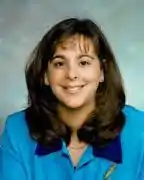
"Chief Microbiologist" Micro-Biologist at Marshall Flight Space Center in Alabama.
Roman is the Chief Microbiologist for the Environmental Control and Life Support System project. She determines how microbes will behave under different situations and in different locations, such as the nooks and crannies of the Space Station.
She ensures safe water and air for the crew of the International Space Station.[49]
Carlos A. Gómez Rosa
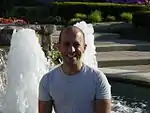
Mission Director/Ground System Manager
2020–Present; GeoCarb Project: Ground System Manager
2016–2018; Landsat 9 Project: Mission Operations Readiness Manager (MORM)/NASA Ground System Lead
2011–2016; Mars Atmosphere & Volatile EvolutioN (MAVEN) Mission: Ground System Manager/Mission Director & Mission Ops Contracting Officer Rep. Responsible for the operations of the NASA MAVEN mission as an end-to-end system to ensure that the spacecraft, the instruments, and ground systems are healthy and that the science is processed and delivered to the scientists on the mission. Answer to the MAVEN Primary Investigator and the Project Manager. Work very closely with the Spacecraft Operations Team (SCT) and also with all of the mission interfaces, including the Navigation Team (NAV), the Science Operations Center (SOC), Instrument Teams, and the Deep Space Network (DSN).
2009–2011; 2009–2011; Deputy then Lead Systems Engineer of the GOES-R Ground System Project at Goddard Space Flight Center in Maryland
2007–2009; Mission Operations Manager - GOES-O Project
2005–2007; Program Director of the EDOS Project
Awards:
- 2017 Honor Award/Group Achievement Award: MAVEN-Mars Science Laboratory Curiosity-Mars Exploration Rover Curiosity: Relay Test Team
- 2016 NASA Exceptional Achievement Medal
- 2015 NASA Robert H. Goddard Exceptional Achievement for Engineering
- Honor Award/Group Achievement Award: The MAVEN Team
- 2007 Engineering Excellence Award: NASA-GSFC Information Systems Division for outstanding leadership and exemplary systems engineering support to the EOS Project.
Originally from Carolina, Carlos attended Colegio Baustista, Escuela Antonia Saez, and Escuela Superior Berwind (Berwind High School). Gomez-Rosa has a degree in electrical engineering (magna cum laude) from the University Of Puerto Rico/Mayaguez Campus and a Master of Science in electrical engineering from The Johns Hopkins University in Baltimore. Carlos is now in his 33th year at NASA.[1]
Yajaira Sierra Sastre
| External videos | |
|---|---|
"PhD in nanotechnology from Cornell University", Astronaut applicant
Sierra Sastre was chosen to take part in a new NASA project, called "HI-SEAS," an acronym for "Hawaii Space Exploration Analog and Simulation," that will help to determine why astronauts don't eat enough, having noted that they get bored with spaceship food and end up with problems like weight loss and lethargy that put their health at risk.[50] She lived for four months (March 2013 - August 2013) isolated in a planetary module, which simulated what life will be like for astronauts at a future base on Mars at a base, in Hawaii. According to Sierra Sastre part of the food study will include an attempt to control the exposure to fresh air, evaluate how their senses of smell and taste change over time in isolation, and find out what role food plays in the crew's spirits and state of mind. Sierra Sastre is an aspiring astronaut.[51][52]
Desiree Santa
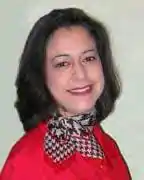
Administrator
"Congressional Liaison/Research Opportunity Administrator" at Headquarters located in Washington, D.C.
Management Analyst in the Office of Earth, performing analytical and evaluative work related to the management, organizational efficiency and productivity of program operations.[53]
Juan A. Román Velázquez
Mechanical Engineer, Aero-Space Technologist
"Space projects formulation Manager" at Goddard Space Center in Maryland.
Román Velázquez is in charge of a group of scientists and engineers who are the developers of the advanced concepts used in the Space missions and whose technologies are to be used in telescopes and interferometry missions.
Felix Soto Toro
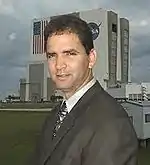
Astronaut applicant, Electrical Designs Engineer at Kennedy Space Center in Florida.
Soto reviews, designs, builds, tests and implements engineering designs used in the Space Shuttle and Payload Operations Development Laboratories. The main project he developed was the Advanced Payload Transfer Measurement System (ASPTMS)(Electronic 3D measuring system), which consists of a simplified, robust, centrally operated and portable system that automatically measures the spherical coordinates offset between the trunnion and their supports during transfer operations.[54]
NASA Awards and Recognitions:
Soto Toro was presented with the 2003 "El Premio Coqui" by La Casa de Puerto Rico in Florida, for his outstanding contributions in the field of science. On November 9, of that same year, Soto Toro along with another Puerto Rican Astronaut applicant, Henry Bursian Berríos and Ninfa Segarra, who was the first Hispanic Deputy Mayor of New York City, were named the Grand Marshalls of the Puerto Rican Day Parade held in Palm Bay, Florida.[55]
Adolfo Figueroa-Viñas
Astrophysicist
Figueroa-Viñas is an Astrophysicist of the Physics Extraterrestrial Laboratory at the Goddard Space Center.[1]
Figueroa-Viñas is the first Puerto Rican astrophysicist at NASA working in solar plasma physics. As a senior research scientist he is involved in many NASA missions such as Wind, SOHO, Cluster and MMS projects in which he is the author and co-author of numerous scientific papers in his field. Figueroa-Viñas has served as Guest Co-Investigator of the International Sun Earth Explorer (ISEE-1) mission and the Voyagers program. He is currently a Co-Investigator in the WIND/SWE experiment of the International Solar Terrestrial Program (ISTP) and the Space Physics Theory Program grant entitled The Role of Turbulence in Heliospheric Plasmas. Figueroa-Viñas has participated in the organizing committee of "La Conferencia Espacial de las Américas" held in Costa Rica, Chile and Uruguay. He is the recipient of the NASA Special Service Award.[56]
NASA's Bonzzo Award

John Rivas from Aibonito, Puerto Rico and creator of the comic strip "Bonzzo", designed some special "Bonzzo" strips commemorating NASA's achievements, including "Beyond the Moon", a calendar of the year 2000 honoring Hispanic heritage. NASA also instated the Bonzzo Award, a pint-size Bonzzo statue that will be given annually to the individual who makes the biggest contribution to NASA's Hispanic program.[57]
See also
References
- 1 2 3 4 5 6 7 8 9 "Noticias y Eventos". Uprm.edu. Retrieved 2015-07-10.
- ↑ "NASA - 2004 Astronaut Class". Nasa.gov. 2007-11-30. Retrieved 2015-07-10.
- ↑ "Astronaut Program - Applications". Lk.astronautilus.pl. Retrieved 2015-07-10.
- ↑ "Hispanic Engineer & IT". Retrieved 2015-07-10.
- ↑ "Biographies of Astronaut and Cosmonaut Candidates: Carlos Ortiz-Longo". Spacefacts.de. Retrieved 2015-07-10.
- ↑ "Biographies of Astronaut and Cosmonaut Candidates: Enectali Figueroa-Feliciano". Spacefacts.de. Retrieved 2015-07-10.
- ↑ NASA (February 2006). "Astronaut Bio: Joseph Acaba". National Aeronautics and Space Administration. Archived from the original on 2012-05-10. Retrieved 2006-11-26.
- ↑ NASA. "NASA Hispanic Astronauts". National Aeronautics and Space Administration. Archived from the original on 2006-10-20. Retrieved 2006-11-26.
- ↑ NASA. "Astronaut Class of 2004 (Group 19)". NASA. Archived from the original on 2006-06-18. Retrieved 2006-11-26.
- ↑ "Launch Schedule: Consolidated Launch Manifest". NASA. Retrieved March 2, 2009.
- ↑ "Statistics - Joseph Acaba". spacefacts.de. Retrieved 2017-12-24.
- ↑
- ↑ "Biographies of Astronaut and Cosmonaut Candidates: Vanessa Aponte-Williams". www.spacefacts.de.
- ↑ "Magnetospheric Multiscale (MMS( Project" (PDF). Ms.gsfc.nasa.gov. Retrieved 2015-07-10.
- 1 2 3 4 5 6 7 8 9 "Hep@Nasa Larc". Oeop.larc.nasa.gov. Archived from the original on 2015-05-24. Retrieved 2015-07-10.
- ↑ "Welcome to Latina Women of NASA home page". Latinawomen.nasa.gov. Archived from the original on 2016-01-25. Retrieved 2015-07-10.
- ↑ Archived May 13, 2009, at the Wayback Machine
- ↑ "100 Influentials List 2006 - HispanicBusiness.com". Archived from the original on 2011-05-22. Retrieved 2009-04-15.
- ↑ "NASA - NASA Scientist Recognized As Innovator". Nasa.gov. 2004-09-22. Retrieved 2015-07-10.
- ↑ "Welcome to Latina Women of NASA home page". Latinawomen.nasa.gov. 2001-02-28. Archived from the original on 2016-01-27. Retrieved 2015-07-10.
- ↑
- ↑ "Dark Matter". NOVA. PBS. June 5, 2008. Retrieved 2009-06-06.
- ↑ "NSF Award #0847342L Increasing the Dark Matter Science Reach of the SuperCDMS Experiment". National Science Foundation. February 1, 2009. Retrieved 2009-06-06.
- 1 2 "Dr. Enectali Figueroa-Feliciano". Goddard Space Flight Center, NASA. Archived from the original on 2006-09-30. Retrieved 2006-11-09.
- 1 2 "MIT Physics Faculty: Enectali Figueroa-Feliciano". Physics Department, MIT. Retrieved 2006-11-09.
- 1 2 "Mars Week 2001". Web.mit.edu. 1955-09-09. Retrieved 2015-07-10.
- ↑ "Welcome to Latina Women of NASA home page". Latinawomen.nasa.gov. 2001-02-28. Archived from the original on 2016-01-27. Retrieved 2015-07-10.
- ↑ "Welcome to Latina Women of NASA home page". Latinawomen.nasa.gov. Archived from the original on 2016-03-04. Retrieved 2015-07-10.
- ↑ "Welcome to Latina Women of NASA home page". Latinawomen.nasa.gov. 2001-02-28. Archived from the original on 2016-01-27. Retrieved 2015-07-10.
- ↑ "Welcome to Latina Women of NASA home page". Latinawomen.nasa.gov. 2001-02-28. Archived from the original on 2016-01-27. Retrieved 2015-07-10.
- ↑ "Welcome to Latina Women of NASA home page". Latinawomen.nasa.gov. 2001-02-28. Archived from the original on 2016-01-27. Retrieved 2015-07-10.
- ↑ "NASA - Hispanic Engineer Helps Space Station Crews Stay Fit". Nasa.gov. Retrieved 2015-07-10.
- ↑ "Biographies of Astronaut and Cosmonaut Candidates: Carlos Ortiz-Longo". www.spacefacts.de.
- 1 2 3 "NASAPeople". Nasapeople.nasa.gov. Retrieved 2015-07-10.
- ↑ "SFA Awards Database - Search". sfa.jsc.nasa.gov. Archived from the original on February 13, 2012.
- ↑ "Welcome to Latina Women of NASA home page". Latinawomen.nasa.gov. 2001-02-28. Archived from the original on 2016-01-27. Retrieved 2015-07-10.
- ↑ "Welcome to Latina Women of NASA home page". Oeop.larc.nasa.gov. 2001-02-28. Archived from the original on 2015-09-27. Retrieved 2015-07-10.
- ↑ "Welcome to Latina Women of NASA home page". Latinawomen.nasa.gov. 2001-02-28. Archived from the original on 2015-07-11. Retrieved 2015-07-10.
- ↑ "Welcome to Latina Women of NASA home page". Latinawomen.nasa.gov. 2001-02-28. Archived from the original on 2016-01-27. Retrieved 2015-07-10.
- ↑ "Biography - Dr. Marla E. Pérez-Davis". nasa.gov. 2020-01-22. Retrieved 2020-08-17.
- ↑ "Welcome to Latina Women of NASA home page". Latinawomen.nasa.gov. 2001-02-28. Archived from the original on 2016-01-27. Retrieved 2015-07-10.
- ↑ "Welcome to Latina Women of NASA home page". Latinawomen.nasa.gov. 2001-02-28. Archived from the original on 2016-01-25. Retrieved 2015-07-10.
- ↑ Archived February 14, 2009, at the Wayback Machine
- ↑ "Welcome to Latina Women of NASA home page". Latinawomen.nasa.gov. 2001-02-28. Archived from the original on 2016-01-27. Retrieved 2015-07-10.
- ↑ "Behind the Scenes: People". Spaceflight.nasa.gov. Archived from the original on 2003-10-07. Retrieved 2015-07-10.
- ↑ "Welcome to Latina Women of NASA home page". Latinawomen.nasa.gov. Archived from the original on 2016-01-27. Retrieved 2015-07-10.
- ↑ "NASA - Puerto Rico native Pedro Rodriguez named director of major engineering department at NASA's Marshall Space Flight Center - Marshall Center Space News Release 04-266 (11-04-04)". Nasa.gov. 2008-04-12. Retrieved 2015-07-10.
- ↑ "Satellite Sees Holiday Lights Brighten Cities". NASA. 27 February 2015. Retrieved 14 July 2016.
- ↑ "Welcome to Latina Women of NASA home page". Latinawomen.nasa.gov. 2001-02-28. Archived from the original on 2016-01-27. Retrieved 2015-07-10.
- ↑ "VIDEO: NASA Mars food mission crew named". Bigislandvideonews.com. 2012-07-10. Retrieved 2013-09-20.
- ↑ "Yajaira Sierra a Step Closer to Being 1st Puerto Rican Woman in Space". HispanicallySpeakingNews.com. 2012-07-13. Archived from the original on 2012-07-17. Retrieved 2015-07-10.
- ↑ "Yajaira Sierra dreams of being 1st Puerto Rican woman in space | Fox News Latino". Latino.foxnews.com. 2012-07-13. Archived from the original on 2015-07-11. Retrieved 2015-07-10.
- ↑
- ↑ "Projects | Internet Scout". Scout.wisc.edu. Retrieved 2015-07-10.
- ↑ "Festivities to mark Puerto Rican Day". Archived from the original on July 24, 2008. Retrieved April 15, 2009.
- ↑ "Home Page - Geospace Physics Laboratory - 673". Ipb.gsfc.nasa.gov. Retrieved 2015-07-10.
- ↑ "Charles Scales recognized for efforts at Marshall's National Hispanic Heritage month celebration". Archived from the original on April 14, 2009. Retrieved April 15, 2009.